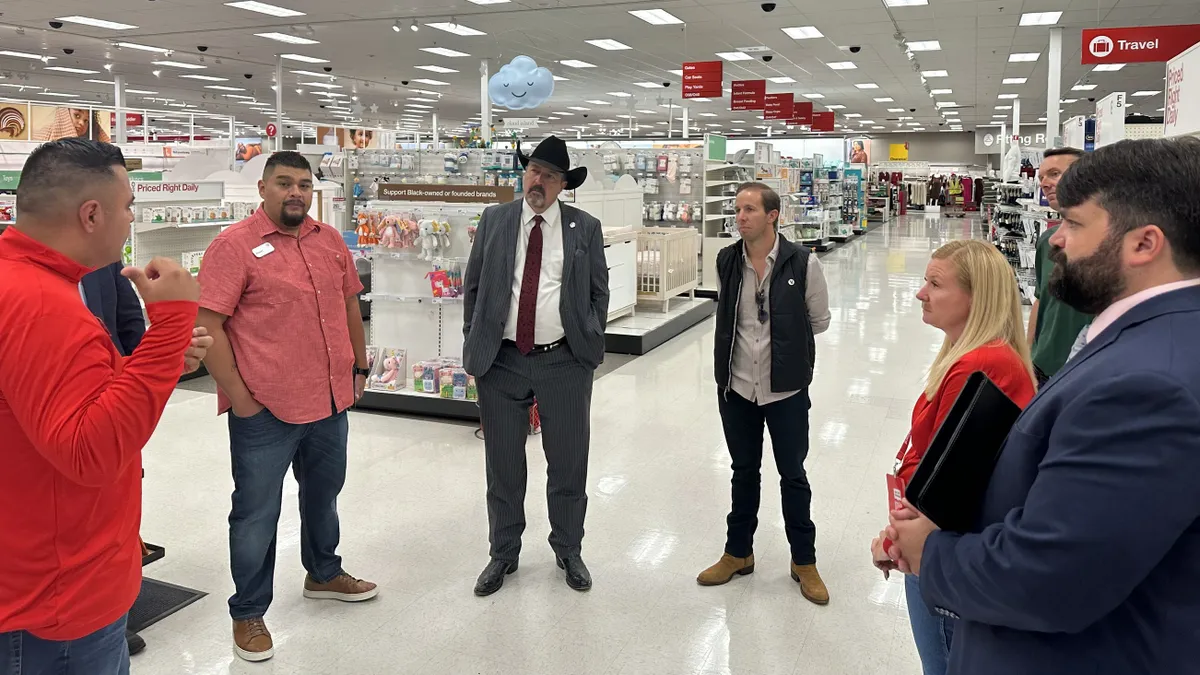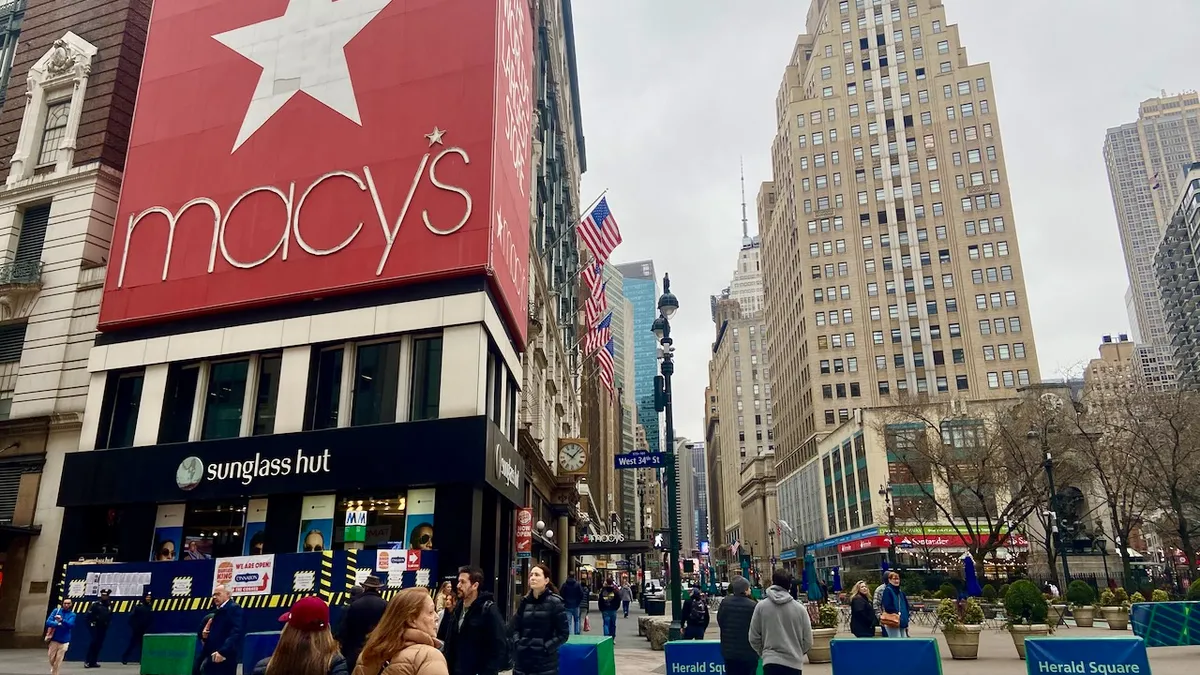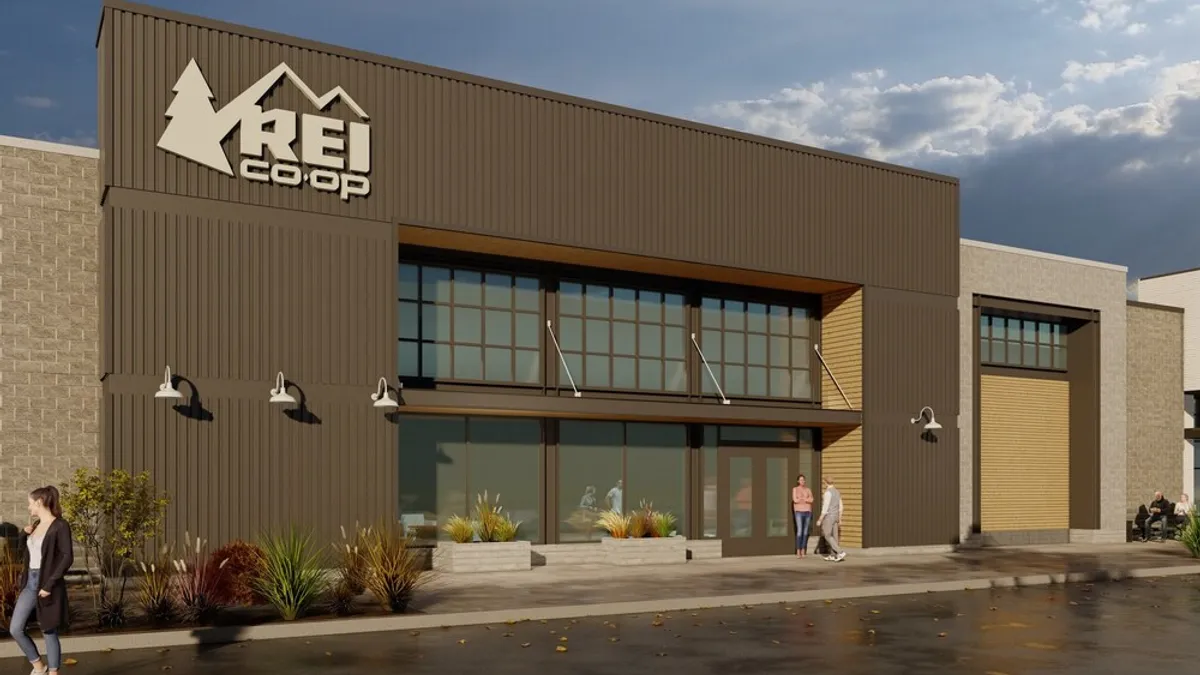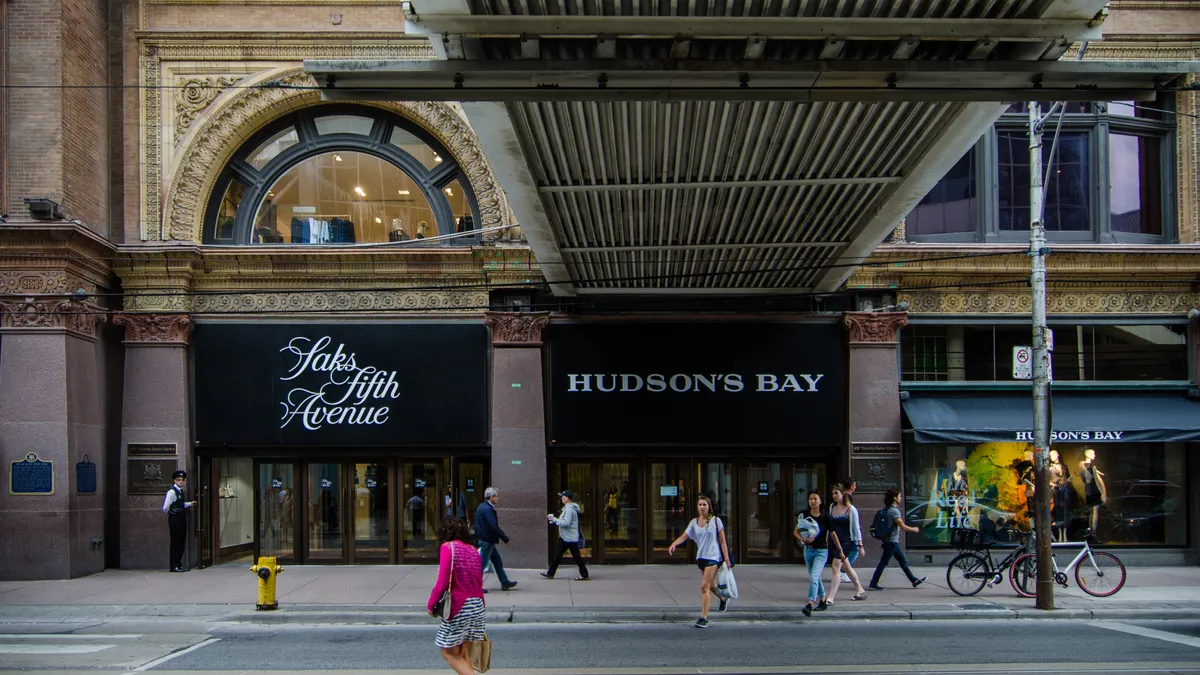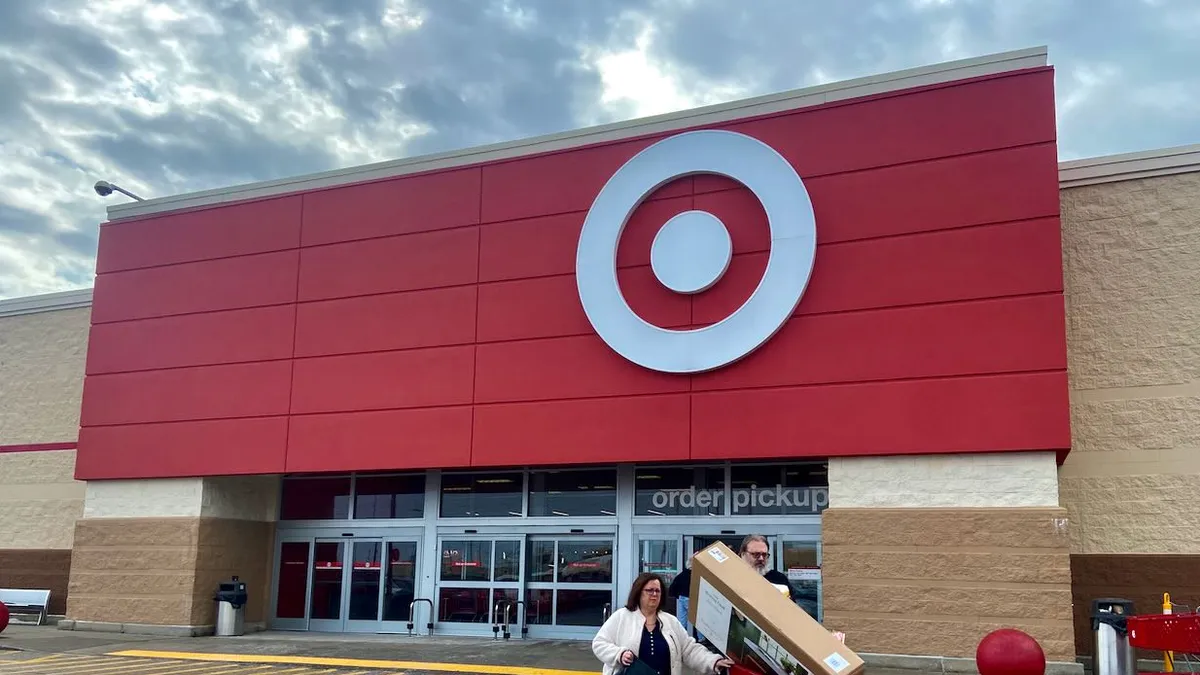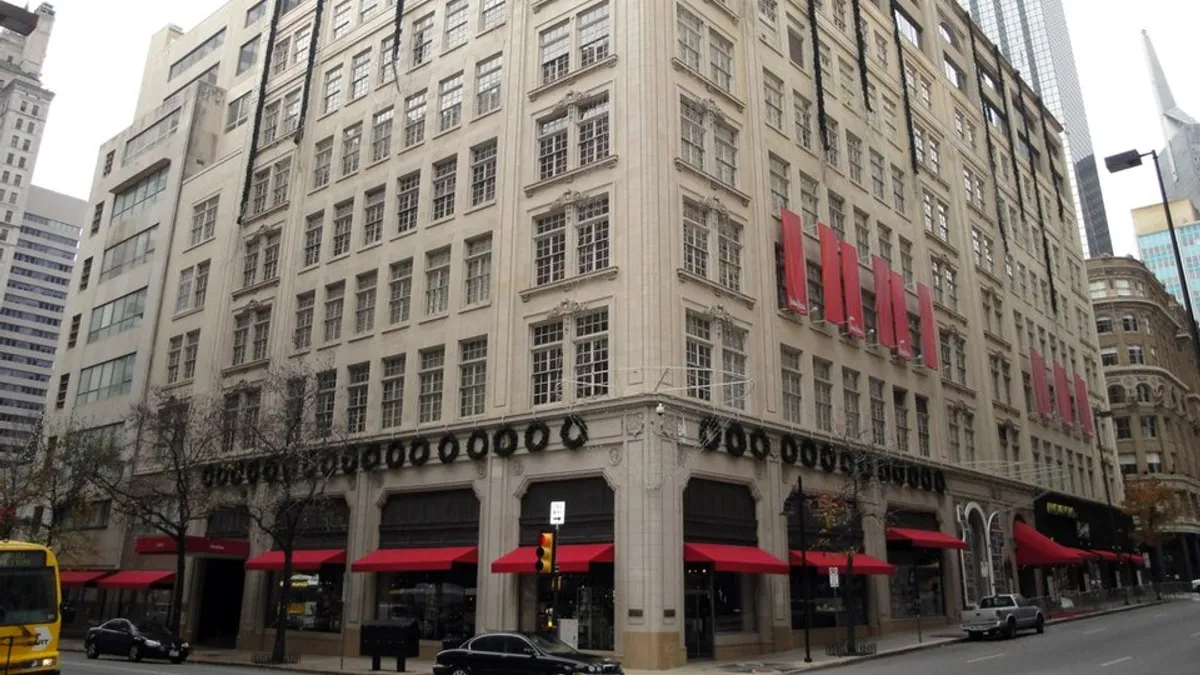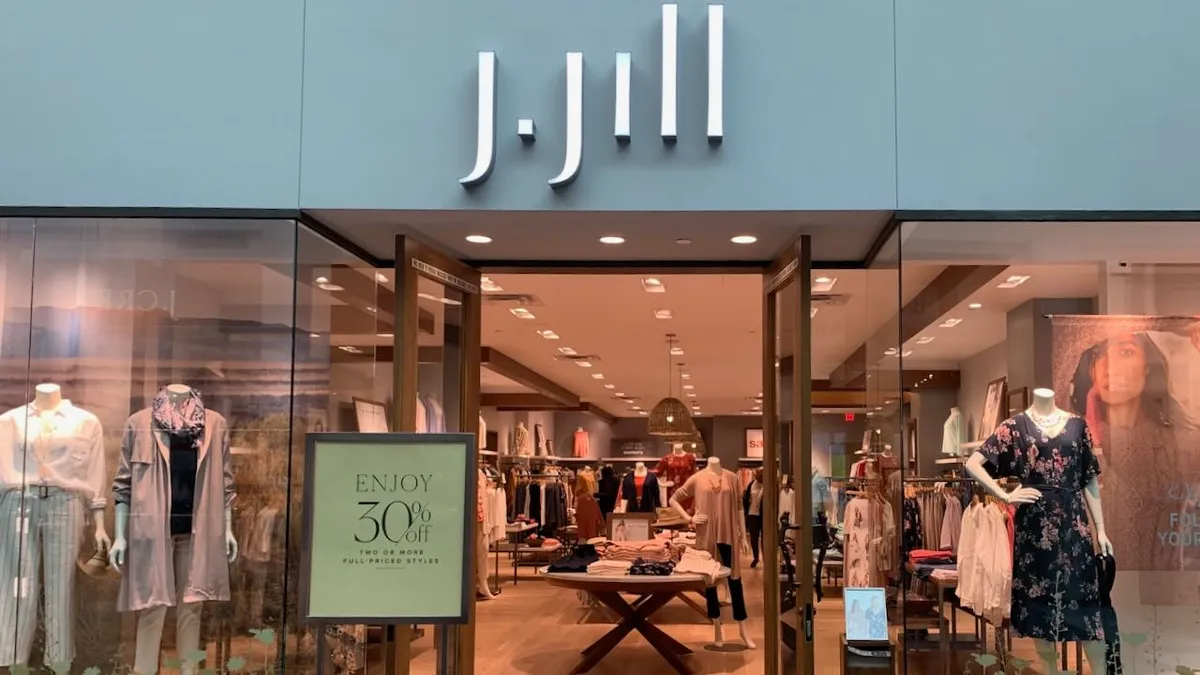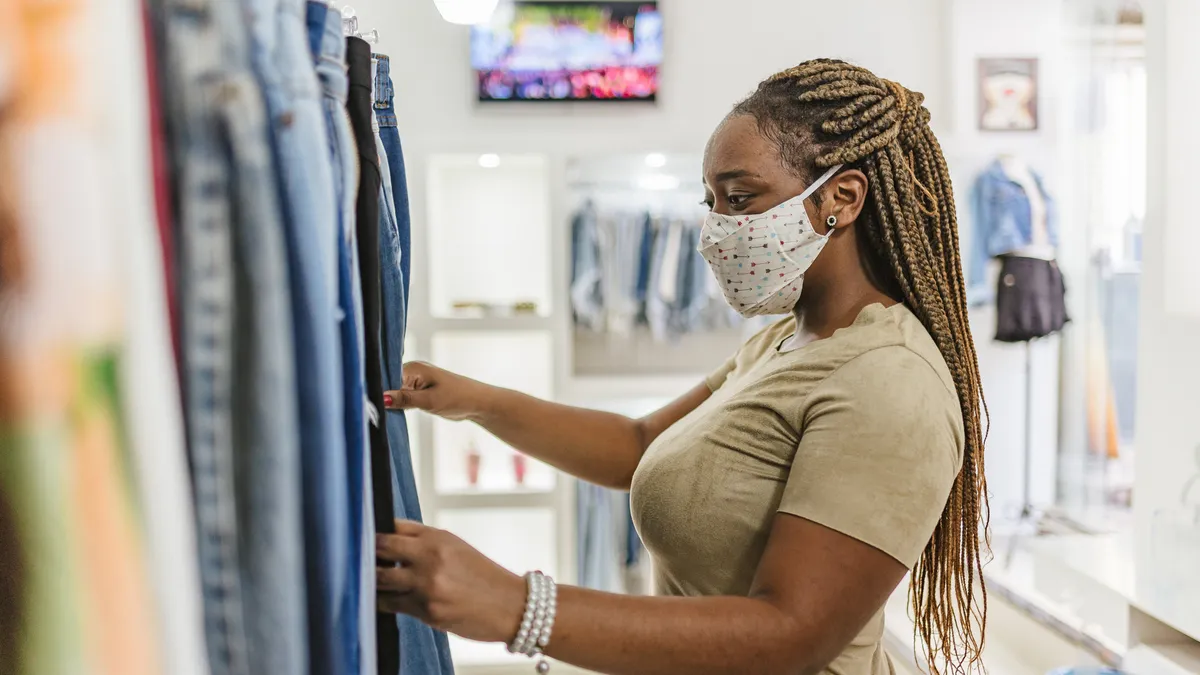Despite years of attention on retail crime from business groups, media, prosecutors and political leaders, retailers are starting off 2024 understanding less about the issue than before.
There are few if any numbers to cite, ever since the National Retail Federation last year retracted one of the most widely repeated data points about organized retail crime, deleting it from its special report on the issue.
“We stand behind the widely understood fact that organized retail crime is a serious problem impacting retailers of all sizes and communities across our nation,” Mary McGinty, NRF VP of communications and public affairs said in a statement. “At the same time, we recognize the challenges the retail industry and law enforcement have with gathering and analyzing an accurate and agreed-upon set of data to measure the number of incidents in communities across the country.”
However, this is arguably not widely understood. The NRF itself last fall reported that theft and shrink rates have remained fairly steady for several years. In 2022, retailers collectively experienced some $112 billion in total inventory loss, mostly (63%) due to various causes within their operations. The other 36% was lost to theft from outside, including shoplifting, burglary, break-ins, robbery, credit card fraud, organized retail crime and other retail crimes committed by non-employees, according to the NRF’s survey.
While the bulk of shrink is internal, industry groups and individual retailers have maintained a spotlight on outside theft, and law enforcement and politicians are under pressure to respond to mounting complaints. Alarming videos of often violent, smash-and-grab incidents at stores have gone viral. But their impact in terms of frequency, scale and financial loss isn't well known.
“Theft has increased and is becoming more of an issue in some locations. It also seems to have become more brazen, which poses a risk to staff,” GlobalData Managing Director Neil Saunders said by email. “Retailers are eager to point this out. I think some are frustrated that more is not done to punish gangs and shoplifters.”
Some analysts have speculated that some companies could be highlighting theft to explain underperformance. Even at well run companies, though, tight margins can make even a “usual” amount of shrink stand out against the bottom line, Saunders noted.
“I think there is a bit of a bandwagon effect. Shrink has become a buzzword, so, because it’s in the minds of investors, retailers are calling it out more,” he said. “Now that performance is squeezed, shrink matters more and it has more of a tangible impact on things like profits. Retailers might be using it as a bit of a shield to hide behind, but in relative terms it is probably more impactful on their business than it was a few years ago.”
Here are seven issues that complicate the discussion of shrink and retail theft.
1. Reported retail crime is going down in many areas, including cities singled out as especially troublesome for stores.
In general, property theft has gradually but steadily declined over the last three decades, according to Michael Lawlor, a criminal justice professor at the University of New Haven and former prosecutor. Nationally, in 2022, robbery incidents rose 1.3% year over year, according to the Federal Bureau of Investigation’s annual crime statistics report, released in October.
Shoplifting reported to police is up since falling dramatically in 24 large American cities during 2020, when most stores were closed for months due to the pandemic, according to research from the Council on Criminal Justice. However, taking out New York, reports in the other cities fell 7%. That includes San Francisco, which is often singled out as rife with crime that causes trouble for stores. The area had among the largest decreases in shoplifting from the first half of 2022 to the first half of 2023, per the report.
The industry is most focused on “organized retail crime,” a type of shoplifting loosely defined as involving two or more people stealing goods for resale, though many retail executives often include all types of theft, including various incidents of shoplifting or employee theft, when discussing the issue on earnings calls.
“We try to make clear in our report that we're measuring shoplifting, and we're not measuring organized retail theft or organized retail crime,” Ernesto Lopez, a research specialist at the Council on Criminal Justice and one of the authors of the report, said by phone. “Our current crime data and infrastructure — what police collect, what the FBI collects — is not designed to capture organized retail theft. As a researcher, my goal is not to say, ‘Look, the industry is right, or look, the industry is bad.’ It's really just, these are the data we collected, and this is what the data show.”
It’s extremely difficult to track how goods are used once they’re taken from the store, Lopez said. Also, even if a trove of stolen merchandise is found at a warehouse or elsewhere, that wouldn’t be linked to a theft event at a store, he also said.
For these and other reasons, some shoplifting may be considered organized retail crime or vice versa, if it’s categorized at all. Often, law enforcement or even a retailer’s own staff disagree on how to categorize an event, according to Trevor Wagener, director of the research center and chief economist at the Computer & Communications Industry Association.
“Data even from two police departments in the same state may not be directly comparable. And in order to count it, someone has to report it, and that doesn't always occur,” he said by phone. “Retailers define issues a little bit differently, and there's certain elements of definitions that come down to a lot of employee-level discretion and interpretation. All of which is to say that it's a tough nut to crack. That's not to say it can't be done, but certainly a lot of thought has to go into improving the data.”
In the short run, improved reporting will likely provide a false sense that shoplifting is up, but retailers should try to report these incidents so that they, their surrounding communities and local law enforcement can devise effective solutions, Lopez said.
“There's under reporting of basically all crimes except homicide,” he said. “If reporting is sporadic or is not consistent — maybe one retailer reports, one doesn't — it doesn't allow law enforcement to get a complete picture of the harm in their city and doesn't allow them to really be strategic in their resources.”
2. Self-checkout is an inventory sieve.
Lost merchandise from self-checkout causes more shrink than organized retail crime in many stores, according to Congressional testimony last year from CCIA’s Wagener. A 2022 study from the University of Leicester in England estimated that self-checkout in the U.S. and elsewhere causes between one-fifth and nearly one-quarter of all unknown store losses.
There may be various reasons for this. New technologies designed to foster convenience can sometimes also make things easier for thieves. Button starters made it easier to steal cars, for example, and self-checkout tech has similarly enabled theft from stores, according to Lawlor. Losses come from clumsy customers accidentally failing to scan an item as well as outright stealing, Wagener told Retail Dive.
“Increased staffing is absolutely one of the top three or four things that you should almost immediately do to combat theft. Higher prosecution is maybe number 10 on my list.”

Lee Peterson
EVP of Thought Leadership and Marketing, WD Partners
Plus, a store with fewer workers can be encouraging to thieves, Lawlor and others said. Lee Peterson, executive vice president of thought leadership and marketing at WD Partners, has decades of experience in retail, including once managing stores. Reducing store staff gives potential thieves the edge in the age-old “cat-and-mouse game” of theft deterrence, he said by phone.
“Retailers are faced with less traffic and their stores have just not been as profitable as they were the previous 15 years or even 30 years, really. And so to make them more profitable, the first thing to go is payroll,” he said. “Increased staffing is absolutely one of the top three or four things that you should almost immediately do to combat theft. Higher prosecution is maybe number 10 on my list.”
Unlike the high-profile smash-and-grab incidents that can net thieves tens of thousands of dollars worth of goods at a time, self-checkout theft is often unseen and, per incident, possibly less lucrative. But nearly 40% of all thefts within grocery stores occur at self-checkout, which last year became the dominant checkout format in the segment, according to reports from sister publication Grocery Dive.
“There's a premium on automation, so a lot of the checkouts are self-checkout, which is very logical,” Lawlor said. “But one of the downsides of that is you have fewer and fewer people working the front of the store. So it's easy just to walk around and through the door, and you don't have to go by any person to do that.”
In September, Costco CFO Richard Galanti blamed a small uptick in shrink a few years ago to the company’s rollout of self-checkout, and said that, at that point, shrink was up by less than a basis point. Last year Walmart pulled self-checkout from at least two stores in New Mexico, according to the Albuquerque Journal, joining several retailers in scaling back or rethinking self-checkout.
3. Employees steal more goods and money than any other type of theft.
Theft by employees accounts for nearly a third of all shrink, and the NRF considers it "just as concerning for retailers as other forms of theft. Employees have more access to merchandise and monies; more control over security measures and processes; and opportunities not available to outsiders," according to its report.
Costco enjoys below-industry shrink rates, and has attributed that to its store layout, limited entrances and membership model, as well as its higher wages, which the company said leads to higher employee satisfaction and lower internal theft.
After implementing RFID sensor technology to detect theft, Macy’s discovered that even some longtime employees were stealing, including someone who had worked there for more than six decades, according to Joe Coll, Macy’s vice president of asset protection operations and strategy.
“I like to think they were not stealing for 62 years,” Coll said during a presentation at the NRF’s conference this month. “But they were stealing from us, and they had been working for us for 62 years.”
Employee theft and process errors are major worries for retailers, accounting for nearly two-thirds of total inventory loss.
By contrast, an emptier store — where workers are fewer and farther between, lower paid and less satisfied — may be more vulnerable to theft by both customers and employees, according to Lawlor. Especially if it’s a chain that seems disconnected from the community, he said. In 2022, the average reported dollar loss from employee theft (including merchandise theft, refund fraud, cash theft or passing merchandise to friends) was $2,180, in line with 2021 and 2020 levels, according to the NRF’s report.
“In the good old days, a lot of stores were family-owned, the owner was right there,” he said. “You knew them or the family, you had a personal relationship, or you might just feel more of an obligation and be protective of the inventory and the business. So all this kind of builds upon itself.”
4. Shrink isn’t the biggest hit to margins, even at retailers citing it as a major problem.
In recent quarters, more executives have proactively mentioned shrink and/or theft or been asked about it. In August, Dick’s Sporting Goods said shrink is an “increasingly serious issue.” In May, Ulta said it would lock up some merchandise to combat theft, later reporting that it paid off.
Target has repeatedly pinpointed its issue in concrete terms. Last year the retailer cited theft as the reason for closing nine stores, although some of those landlords disputed that, saying Target provided other reasons for the closures, according to Bloomberg’s reporting. Moreover, crime rates were much lower at stores that Target closed than at those it has kept open, even at locations near the closures, according to a report from CNBC.
In November, Target executives said that shrink losses would end the year better than expected, though still probably worse compared to 2022.
Markdowns, inventory impairment, fulfillment costs and other factors outpace shrink in their impacts on gross margin at Target.
Target is seeing bigger margin hits from e-commerce fulfillment and markdowns. In its 2022 annual report, the retailer said its gross margin fell to 23.6% from 28.3% in 2021, with shrink contributing 0.7% to the decline. That’s less than the impact of fulfillment of online orders and supply chain issues (a 0.8% hit) and merchandising issues including higher clearance and promotional markdowns, merchandise costs and freight costs (3.4%).
5. Many related costs are not factored into shrink or theft reports.
Target said it lost sales in the second quarter after it removed Pride merchandise and altered some displays when people destroyed items and put store workers at risk.
The expense of cleanup or repair after theft or vandalism aren’t accounted for in shrink or retail theft statistics, according to CCIA’s Wagener. It’s possible that the financial consequences of theft are up significantly, even if actual crime rates or shrink levels aren’t. There also may be costs from preventive measures like beefing up security personnel or technology.
“A smash and grab can impose economic costs an order of magnitude larger than the inventory loss that occurs,” he said. “We don't think that the amount of goods being taken is actually changing much. There’s a possibility that could be consistent with what we're hearing from retailers, which may not actually indicate a rise in shoplifting or theft, but a shift in tactics that could impose larger economic costs on retailers. As far as I know, that’s not being measured in any systematic way.”
6. The threat of violence is a major risk that complicates loss prevention.
The prevalence of guns in the U.S. makes confronting thieves in stores potentially deadly, complicating retailers’ approaches to loss prevention, according to a number of crime and retail experts.
“It’s scary — a guy could brandish a gun, so some stores have a policy that, if somebody’s stealing something, let them go, don't chase after them or don't confront them,” Peterson said. “Thieves have figured that out in like five seconds.”
In August, Target CEO Brian Cornell told analysts that in the first five months of 2023, Target stores had a 120% increase in theft incidents involving violence or threats of violence. During an October press conference in Washington, D.C., following meetings with members of Congress, NRF CEO Matthew Shay said that organized retail crime is “not only about the dollars involved here, it is about, in some cases, the tragic loss of life, the violence, the aggression, that's playing out in these retail locations.”
The level of theft and violence impacts store workers and customers, hampers retailers’ ability to hire and retain workers and leads to worries about safety, the NRF said in its latest report. In 2022, the NRF said “the current climate of active assailants and gun violence add to retailers’ concerns about being able to keep employees and customers safe.”
According to the most recent research, retailers’ views around violence have actually tempered somewhat, but most still view it as a major risk, with 72.3% concerned about violence during a criminal act; 65.6% concerned about mass violence or an active assailant; and 65.2% concerned about guest-on-associate violence.
Given such worries, it’s understandable that the policy at most retailers is for staff to let shoplifting and other theft slide, Lawlor said. Still, that can embolden thieves and complicate any response from law enforcement, he said.
7. Cargo theft is an under-appreciated aspect of retail crime.
The NRF includes cargo theft within its assessment of organized retail crime. Cargo theft is escalating and is likely under-appreciated, according to supply chain risk management firm Overhaul.
Cargo theft has been on the rise in the U.S. following the supply chain disruptions of the pandemic, Overhaul Intelligence and Response Manager Danny Ramon said by email. Losses can occur at various points in the supply chain, including invoice errors, warehouse losses or cargo theft, and aren’t always attributed accurately.
In the U.S. and Canada in 2022, there were 1,778 supply chain risk events of various types, up 15% year over year, according to CargoNet, a network that collects and shares information with law enforcement and cargo theft victims. In 2023, incidents escalated, with the number in the second quarter up 57% year over year in the region, per CargoNet.
In the U.S. alone in the second quarter of 2023, there were 132 cargo thefts, up 15% year over year, with an average loss value of more than $428,000 — up 55% from the previous quarter, according to Overhaul data.
“Discrepancies in inventory are often attributed to retail shrink or theft, but they may also be due to cargo theft,” Ramon said.



